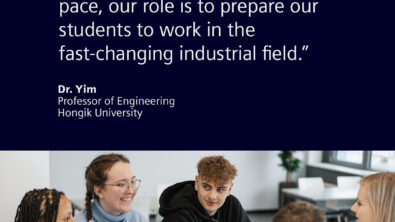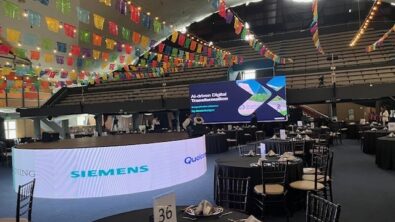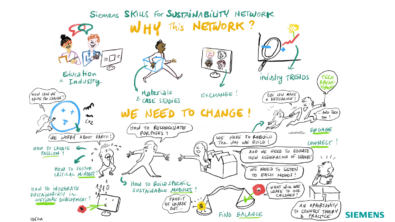Podcast Transcript: Finding the Magic in Aerospace for the Next Generation
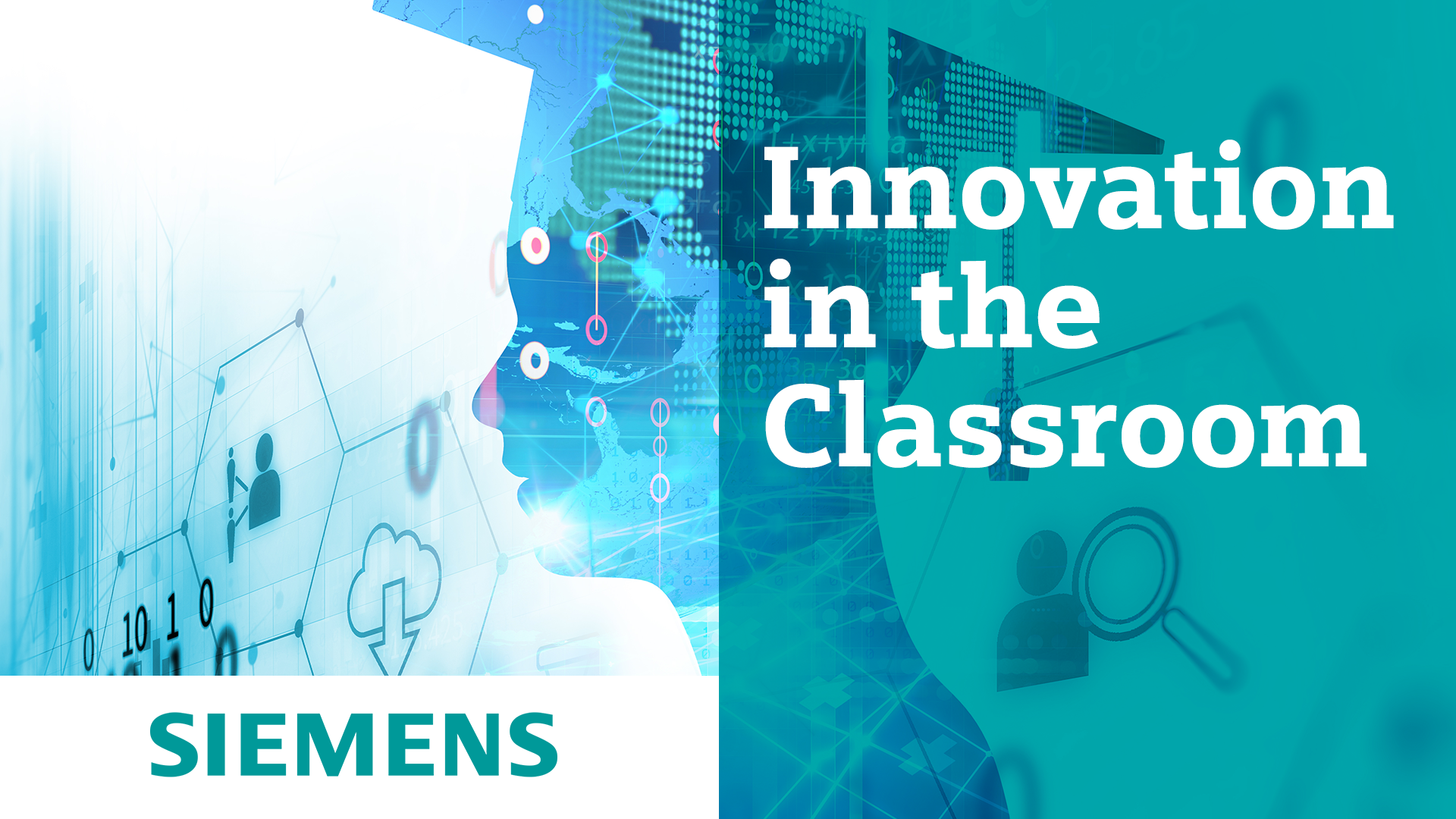
Join our podcast to immerse yourself in an environment of innovation and exploration. Hear from experienced leaders on how they found their passion in aerospace and their methods of inspiring the next generation. In this audial experience we’ll discuss:
- Woman in Aerospace
Importance of role-models to support young girls’ educational aspirations in the world of STEM
- Personal Growth
Process of becoming a master of aerospace and how the badging program brings awareness as early as the age of 5
- Sustainability
New advancements such as the electric aircraft, additive manufacturing, and biofuels
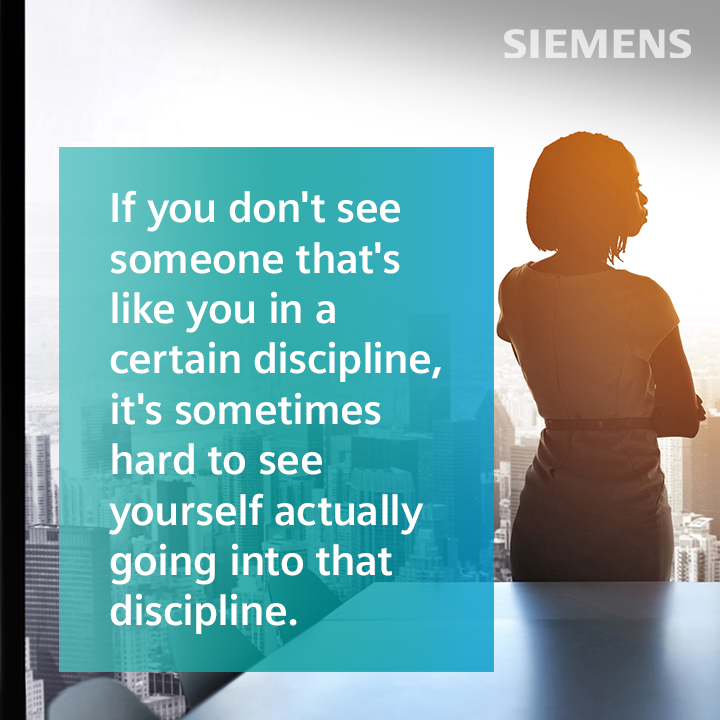
“The intent is to create an environment where kids can stay engaged and keep exploring and hopefully what comes out of that is a more deeply rooted interest. It’s about lighting that spark and fanning those flames”
David Leiting Jr, Eagles Program Manager at EAA
Transcript
SHANNON (NARRATION): Look up at the sky. What can you see? A new frontier for humankind? A future space for transportation? A method of communication for other worlds – even with aliens? How about simply: Possibility? If you’ve caught yourself wondering, you wouldn’t be alone. Such thoughts have been shared by millions of others across history. And every day, creative minds in Science Technology, Engineering, the Arts, and Math continue to make these dreams a reality. Did you know that there are art installations featuring floating AI aerobs, and a feature film being produced on the International Space Station? Even air taxis might soon become a viable way to move around our cities. But don’t forget what’s most important – internet access is becoming faster and faster in the air – so on your travels you won’t need to take a break, even from listening to this podcast!
DAVID: In today’s world, a lot of people are looking at: What is my impact going to be? What can I bring to the world that’s positive, and I think if we can find ways to highlight that impact that can also be pretty powerful.
SHANNON (NARRATION): David Leiting is Vice President of the Experimental Aircraft Association, Chapter 252. He’s joining me on the show today, together with his EAA colleague Rick Larsen, Vice President of Communication and Member Programming, and from Siemens Digital Industries Software we have Sonya Sauvé, Director of Aerospace and Defense Solutions, and Dale Tutt, Vice President of Industry. We’ll also hear from Jarrett Schiedermeyer, Senior at Oshkosh West High School, and EAA Young Eagle. I’m Shannon O’Donnell, and this is the Innovation in the Classroom podcast. I asked Dale and Rick: What do they see when they look up, and how might tomorrow’s thinkers and doers and makers see the sky as a place of possibility?
SHANNON: We are in a dark sky community, and I love going out and looking up. And before it was planes, and now it’s all satellites!
DALE: We’re far enough away from town that we have a really good amount of stars. But when you first saw those satellites, and there’s like all these objects that are in a straight line, you’re kind of, like, “that doesn’t look right”, and then I went and started looking it up, like, “what am I seeing here?” And I was like, “Wow, that’s pretty cool.”
RICK: I think we want more kids looking up like that at night. I still do that, you know, I always do that.
SHANNON: Sonya, what would you do?
SONYA: I have a 14 year old and honestly, he’s a big Star Wars fan. Everything he does with Lego is stuff that flies. And so we’re looking at shooting stars and seeing objects sort of moving, like, “That’s not a plane what is that?” if you combine their interests and then add an extra little thing on top, you’re going to give a direction. So much of it has to do with getting kids to want to explore where they might want to go.
SHANNON (NARRATION): It probably won’t be surprising for you to hear that my guests were aviation enthusiasts as kids. Part of that was because they were exposed to important moments like the moon landing.
DALE: I don’t really remember the first moon landing, but I remember some of the moon landings after that and some of the missions into space with Skylab.
RICK: It was certainly the same for me. You couldn’t help as a kid at that time to not have some level of interest and curiosity in what was going on because it was right there, it was in your face all the time.
SHANNON (NARRATION): For David Leiting, it was a little different. At just six months old, his father took him to AirVenture, a major air event in Oshkosh, Wisconsin, in the middle of the US—
DAVID: I’ve literally been every year since then, for as far back as I can remember, that week at the end of July coming to Oshkosh was always the highlight of the year.
SHANNON (NARRATION): David now works for the organisation that runs AirVenture – [Clarifying] that’s the Experimental Aircraft Association, or EAA.
DAVID: I mean, that’s the best way to put it. 600,000 people plus get together with over 10,000 airplanes. You have everything from over 1,000 vendors and exhibitors scatters across the grounds, displaying the latest aviation. Then you have all the show planes, everything from World War Two era fighters and bombers to vintage aircraft that flew in the 20s and 30s. Little ultralight, fun fliers, technology. powered parachutes where you just have a parachute over your head and a fan on your back and that’s how you’re flying. It’s always interesting to meet these kids from other areas of the country that really haven’t had that exposure to an aviation event that’s this large scale. And for those individuals, there’s a lot more self-exploration. Paul used to say it’s the airplanes that bring us together, but it’s the people that keep us, you know, coming back. The next one begins July 25, 2022, if you want to add it to your calendar. Earlier, our team spoke to Jarrett Schiedemeyer, an EAA Young Eagle and aspiring pilot, who told us more about making that journey of discovery with EAA.
JARRETT: I actually started with flight sims and the controls are all similar. The only thing that’s not there is that real feeling, you don’t get a feel for what it’s like, the stiffness of the yoke when you’re turning or pulling it back or pushing forward, or the wind or any of that. And it wasn’t really until I started feeling that and started getting, like, real one-on-one instruction, until I really understood what it took.
SHANNON: What was it like for Jarrett to fly a plane for the first time?
JARRETT: There’s some sort of anticipation that you’re getting ready. When you’re talking with other people, they can explain exactly how it’s going to be. But you have to experience it to be able to know what’s going on. Like, you’re sort of free, there’s no weight to you, and you’re able to really see the world from a very unique perspective. There’s the moment of weightlessness, and you feel like you’re in control, but all of a sudden, wind could come out of nowhere. And it really keeps you on your toes the whole time. And it really keeps you thinking about, you know, how to pilot the aircraft in a safe way.
SHANNON: “How many of you have done a Young Eagles flight? Have you? Everybody has, okay!”[4]
SHANNON (NARRATION): But what happens when students like Jarrett come down from the sky?
SHANNON: What do we do to keep them excited about that afterwards?
RICK: One of our hallmark programmes is our Young Eagles program. Over the course of almost 30 years, we’ve flown, 2.3 million kids, giving them that first exposure to flight. And it’s been great. But if you don’t take them from that moment, and help pull them forward, it’s really easy to lose them. The programming that we’re working on now, like AeroEducate, where the intent is to create an environment where kids can stay engaged, keep exploring, and hopefully what comes out of that is, a more deeply rooted interest. It’s about lighting the spark and really fanning those flames when the kids are, you know, 7, 8, 9, 10, 12 years old.
SHANNON: AeroEducate is the latest youth initiative from EAA, of which Siemens is a partner. And it aims to bring interactive and educational virtual experiences to young people ages 5 to 18. Young Eagle Jarrett volunteered at AirVenture this year, where they first rolled out the programm.
JARRETT: I was thinking, this is a really awesome idea! When we look at learning how to fly planes, a lot of people think it’s, you know, “paper, pencil, book”. And that “paper, pencil, book” part of it is like the part that draws away most people. But with AeroEducate, it’s super easy to learn, like, really basic things that keeps building upon each other. And the way the badging system works, it almost rewards you for allowing you to learn, and it teaches you in a really fun way that I wish I had when I was younger.
SHANNON (NARRATION): As well as keeping education fun, AeroEducate also addresses some of the key questions that avid young engineers and pilots face: How on earth do I get started? And importantly for parents: Will this lead to a stable job? I asked Rick Larsen and David Leiting what went into AeroEducate’s design. A big part is the badging system, which rewards kids at achievement milestones and helps them curate their progress.
RICK: Having been around the industry, as long as I’ve been around it, we haven’t necessarily made that real easy for kids or parents to really even understand. We want to be able to show the breadth of what’s out there, I’m sure Dale and everybody on the call would agree. You know, there were a lot of aspects of aviation and aerospace I didn’t even know existed until I got into the industry.
DAVID: When you can just sit down with the parents and explain to them that we’re at a critical point in the aviation industry, on all aspects: The pilots side, the mechanic side, the engineering side, the business side, the air traffic control side, there’s a need for good-quality, qualified individuals to enter this workforce within the next couple of decades. When they hear that, it’s a bit reassuring that, okay, my child isn’t just chasing this pipe dream that, you know, once they get to graduation, and they start this job search that there’ll be very few jobs out there.
SHANNON: On the website, you have a virtual reality world where people can do walkthroughs and virtual tours. So it’s interesting to see that and think about the applications that people could have exposing their students, even if they’re English instructors, to be able to take them through something and then say, I want you to write an essay on this, or what feelings does this evoke, right?
RICK: When you go back to, to what EAA is all about, you know, the word ‘experiment’ is in there. It started with folks being able to design and build their own aircraft; that freedom has remained essentially unchanged. I think the environment that we try to create is one of being able to experiment; being able to try new things. We are in the process of doing our first major expansion of the museum. A significant part of that expansion is a new Youth Education Centre. I think we’ve got five labs, classrooms will have a wind tunnel that was donated to us by [inaudible]. The idea here is to expand our ability to augment what can happen in a normal classroom with a lot of true hands-on, STEM-oriented learning. It’s one thing when you’re trying to explain what happens to an airfoil when it’s stalling. It’s another thing to be able to show that in a wind tunnel with a smoke generator, and go, “okay, this is what we mean by that.”
SHANNON (NARRATION): “If money was no object and a man was determined to build an interplanetary spaceship, what would happen? Well the answer, Chrysler now brings you: Test Flight!” Whether aviation or interstellar, public concerns about the expense of flight and aerospace initiatives endure. How do we encourage tomorrow’s workforce to see aeronautics as something obtainable? And, what steps are companies like Siemens taking, to ensure the field measures up to sustainability goals for a greener future?
SHANNON: Dale, we’ve got 600 People that have reserved $250,000 tickets on Virgin Galactic. Rihanna and Justin Bieber. I think Lady Gaga, even. Where does the glamorization versus the reality of aerospace fall?
DALE: Yeah, that’s a great question. If you think about the early days of aviation, I think that there was a lot of wealthy people, the Howard Hughes of the world, and now it’s everybody. So I think you’ll see the same thing. It might still be five years away, maybe it’s 10 years away, I don’t know. But I think for those of us that are not glamorous, so we’re not going to make a music video in space, I think it’s going to get a lot more accessible. I think when you look at the broader goals of many of these space activities, that there is this desire to open up space for good and make it accessible to people, and that the cost will actually naturally come down. It might actually get to where the average person can fly to the airport instead of, you know, stuck in traffic for two-and-a-half hours. That’s going to get a lot of people interested and excited about what you can do, because it brings flight to the average person.
SHANNON: Sustainability is something that Siemens is standing behind strongly right now, which is fantastic. I’m curious, from your perspective, what changes do you foresee and what transformations do you see happening in aviation to meet the sustainability goals of today?
DALE: Some of the obvious things that are happening with the sustainable fuels, the biofuels, there’s a lot of emphasis on that. But you’re also starting to see with electrical propulsion, [inaudible], the electric aircraft, I think that’s going to drive a different approach to sustainability. In the design of the airplane, how do you design it, so that the systems on it are more efficient, whether it’s aerodynamic efficiency or even just the efficiency of the systems on the aircraft, but you’re also looking at how you’re building aircraft, additive manufacturing is a much more sustainable approach towards building parts. It’s going to be more than just changing fuels to a different type of fuel system. It’s going to be across the entire ecosystem.
SHANNON: You mentioned additive manufacturing. So, if you could briefly explain that a little bit?
DALE: In traditional manufacturing methods, you either machine a part where you’re cutting away material, or you’re maybe building a composite part with layups of carbon fiber fabric. Where additive [manufacturing] is different, it’s like your inkjet printer at home. But you’re printing with metal. I think about some of the parts that I designed as an engineer where maybe we started with 110 pound blocks of material or aluminum. And we would machine it away to like an eight pound part. You’re creating almost 100 pounds of scrap, and of chips and waste. When you take additive [maufacturing], you are just laying the material down exactly where you need it. It probably is the most complete end to end digital process out there. Right now, I can create a 3D model of an airplane. And I can be printing it this afternoon. And so, the amount of waste and the amount of recycling is much lower, and so it’s just a much more efficient method.
SHANNON (NARRATION): It helps to know that, as an industry, we are making waves with sustainability efforts. But what about progress for women? Women are still poorly represented in STEM, especially in aerospace. I wanted to know how programmes like AeroEducate and similar initiatives at Siemens encourage girls and young women to get more involved with aviation.
SHANNON: Is there something, Sonya, that you see Siemens is doing or should be doing to help promote that as well?
SONYA: We put a lot out there in terms of how we improve the way people work in the context of a specific industry. There are podcasts that sort of highlight how this industry is moving forward and changing. We have students that actually come into each of our departments every year. This year, I have actually a female student in my team, and she was more focused on auto, well, turns out, maybe not anymore, right after spending the whole year with us! She now realises how much she can contribute, and how much, if you’re someone that loves to problem-solve really complicated things, and actually learn throughout your career, you know, AND is where you need to be. Something that we need to talk more about is: Your engineering degree is just the start of something. We can’t only have all these technical people working; you need other types of profiles to help the programme along. You can do programme management, you can do a test engineer, you could work on the production line, there’s a wealth of different opportunities, and you’re not necessarily stuck in one role for your whole life. I also worked in engineering, but within a field that was more focused on how we do product development, and how we transform that approach to actually working together to be better, faster, and more agile in the way that we develop programmes.
SHANNON: I love everything about aviation, But I ended up working on a behavioral health team, and British Airways was a customer. And I’ll tell you that my interest in aviation skyrocketed, because I got to go behind the scenes at BA and see all of the practicalities behind the scene. And that’s not something that you would get from a classroom. It’s not something you would learn anywhere else except for being out in the working world. And by then you’re too old to go back to school and take calculus, right?
SHANNON: I think that’s another area of what do we do to retool and retrain this workforce, so that we also have more mentors available to the kids that can take them behind the scenes and into other areas. But I think you’re highlighting another interesting point is role models, right?
SONYA: If you don’t see someone that’s like you, in a certain discipline, it’s sometimes hard to see yourself also in that you’re actually going into that discipline.
DAVID: Sonya brought up seeing somebody that looks like you. One of the things we really try to encourage at the local level at these EAA chapters is, when these kids come out for their first flight experience, put them with a pilot who they can look up to and say, “Hey, I see myself doing what this person is doing.”So for a lot of chapters, that means putting the girls in with the female pilots, because it just seems that much more obtainable. I think, as we look at a programme like AeroEducate,
RICK: if you compare the percentage of male versus female, it’s very different than what you would see if you compare the percent of female [inaudible] for example, you know, we see about close to 40% of Young Eagles being young ladies. It’s about showing what’s possible. Whether it starts with AeroEducate, starts with the Young Eagles, flight, whatever, you’re opening this door to a big broad industry that has all kinds of different opportunities in it. A lot of it to me is exposure and encouragement and if you’re showing an interest, fan those flames.
SONYA: Everything doesn’t come necessarily from an initial passion. I’m all for finding your passion and following it. But sometimes, you being curious – I’m someone that’s curious about multiple things. And if I think back at when I started my first physics class, I must have been 13. And, why did I like it so much? It felt like it helped me understand what’s invisible about the world, right, that’s what really brought curiosity for me. I have an 18 year old that’s currently had to go through this process of figuring out what they wanted to do in life. They have a lot more visibility on a lot of information, which is maybe not what we had when we picked our discipline, right? So I think we need to sort of consider the context in which these kids live today, and how to go put seeds within that context so that it grows.
DAVID: There’s a lot of unknowns and a lot of untapped potential. And I think it’s going to be exciting to see it all unfold and fun for EAA and Siemens to play a small part in that.
DALE: You know, I think this is such an exciting time for us. If you look back to the period of the 1920s, you know, 20 years or so, after the Wright brothers flew, and how much the growth of aviation was fuelled by guys that were just dreaming, and there were organizations that were funding these races, people were pushing the envelope back then and dreaming and they were willing to invest. We’re in that same time frame right now, it’s not governments that are pushing the movement of what’s happening in general aviation today. And so when you start thinking about what transportation and mobility looks like in the future, where you take an air taxi down to the airport, and you fly above the gridlock, you get there in 30 minutes or so. These things are not that far off in the future for us. I’m very excited. That was not something that we really thought would ever come to pass when I was when I was a kid. To actually see it happening now is, is pretty incredible.
SONYA: I just want to make sure, like, I know that we need to prepare this workforce for this new approach to doing things; the reality of the industries that they’re not quite there, right? So you have to be open to things not being quite what you’re expecting. And to be an agent of transformation within the companies you’re going to be working in. And I think that’s maybe one of the most important roles. You’re going to be a really big change agent. And so that’s a quality that you’ll, if you can do start doing it in school, learn the basics of it, it’s something that you’re going to be faced with, as you go into the workforce, and we’re expecting you to go change things!
SHANNON: To learn more about EAA, visit eaa.org. And to find out how Siemens Digital Industry Software empowers learners to create an innovative and sustainable future, go to siemens.com/students. And remember: The next AirVenture is July 25, 2022! And even if you can’t make it to Oshkosh, remember to always look up for a spark of innovation! Thanks so much for listening!
END
